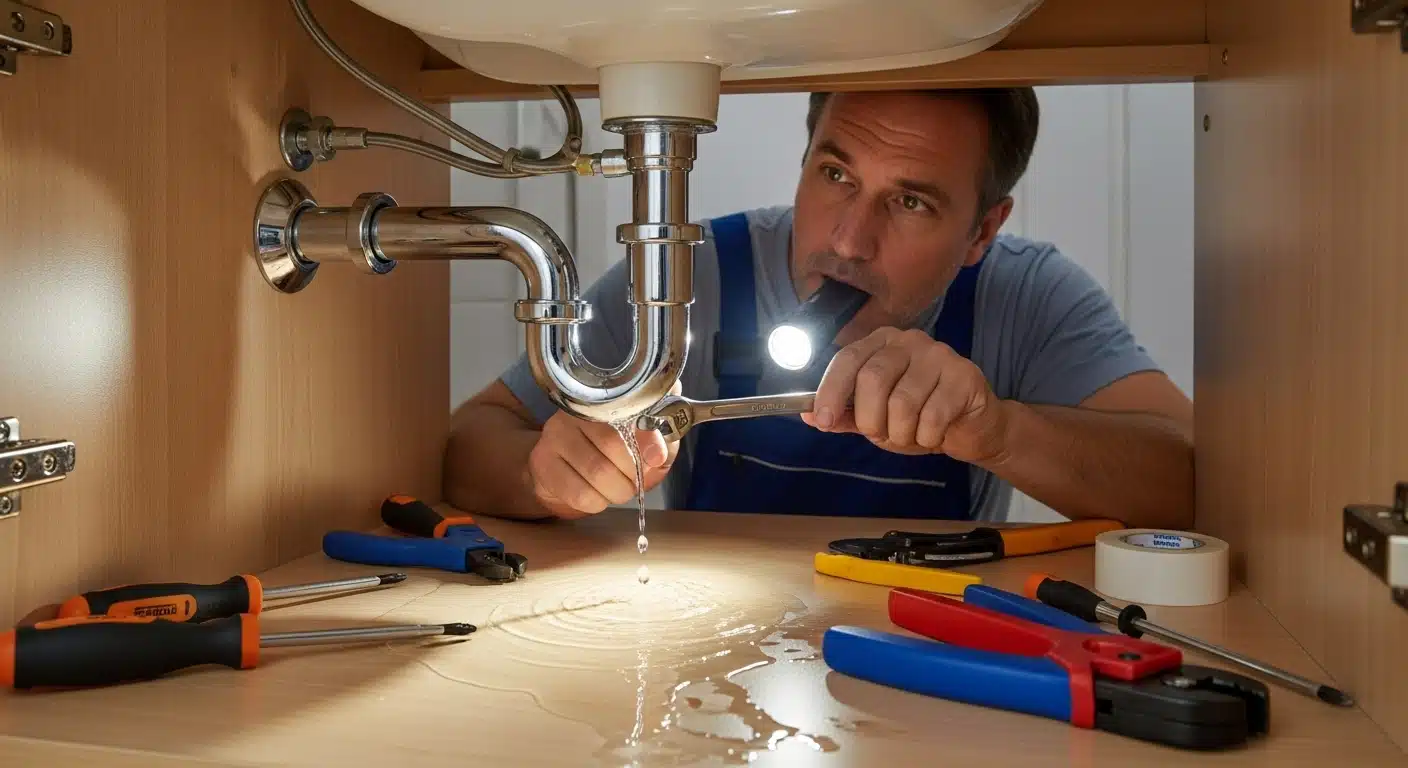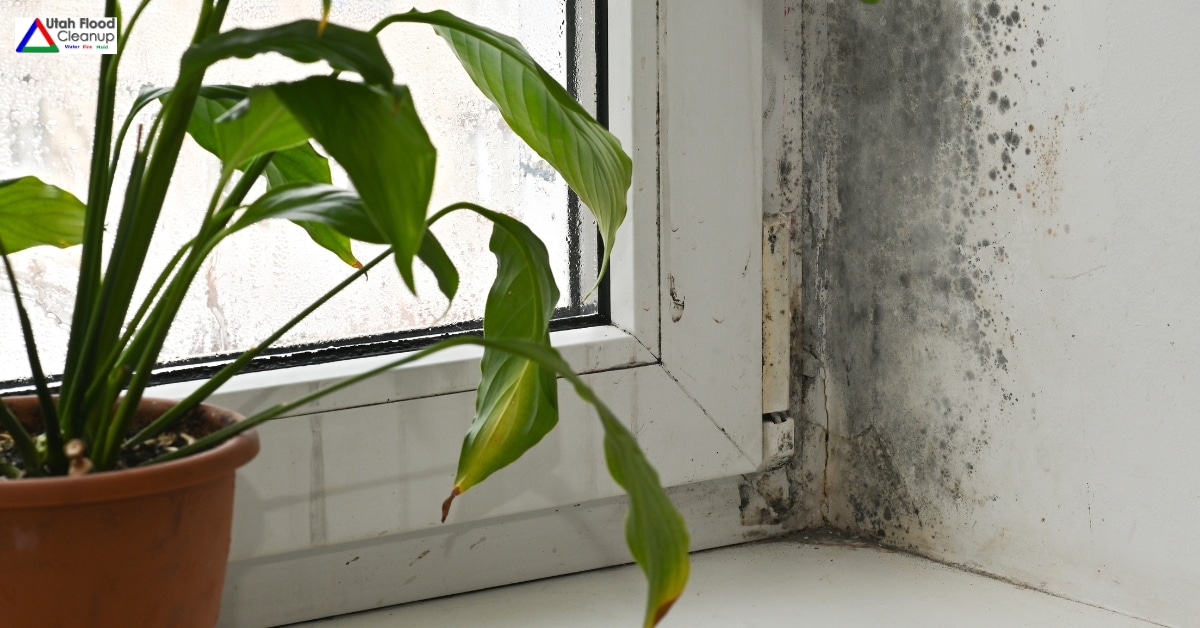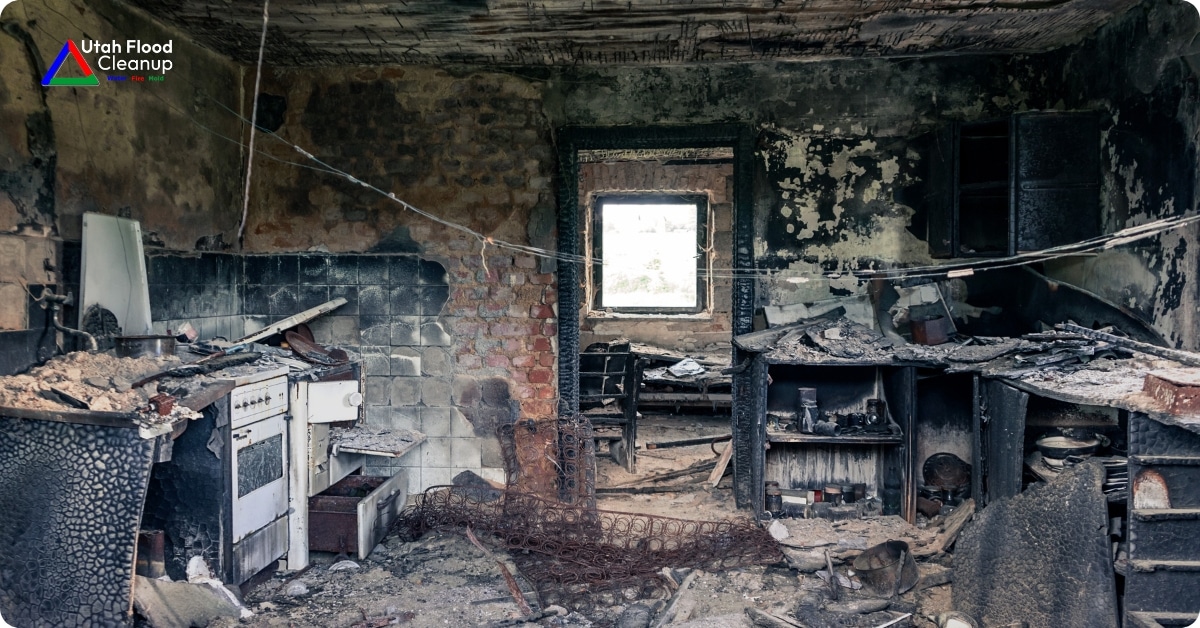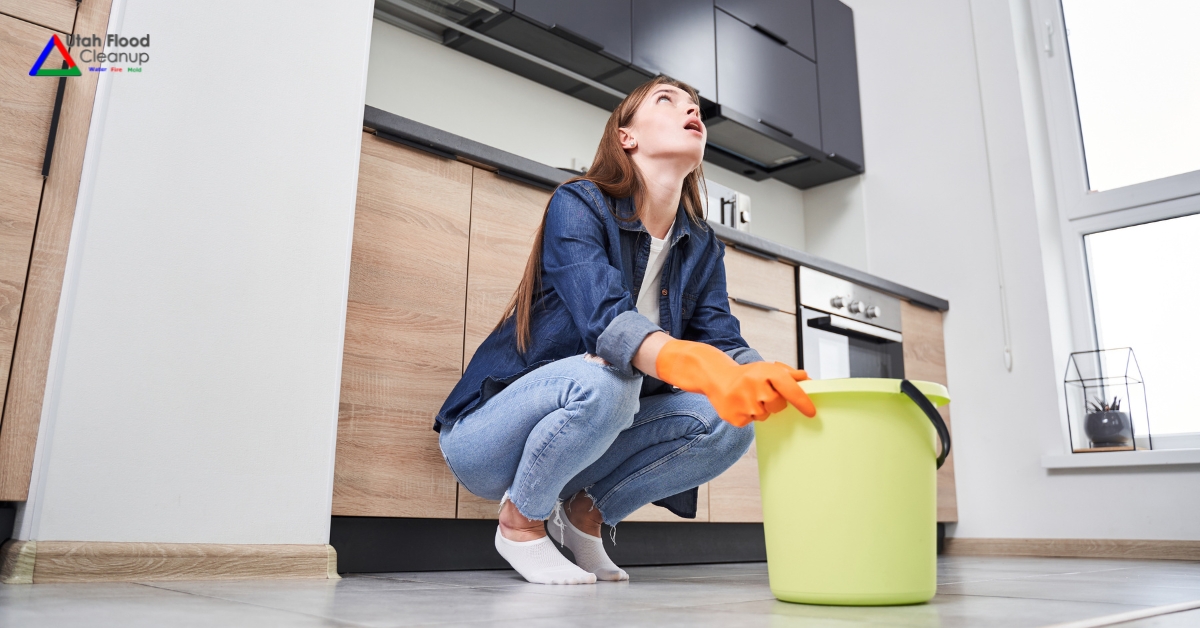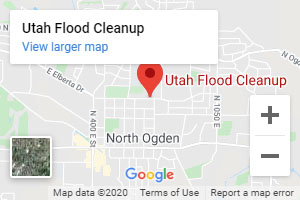Understanding Mold and Why It Matters
When you think about threats to your home, you probably picture fire or flooding. In Ogden and Salt Lake City, Utah, homeowners face another silent and persistent danger. Mold damage can slowly weaken your home’s structure and create serious health concerns before you even realize it is there. Here is the thing. Mold grows quietly, spreads quickly, and often hides behind walls or under flooring long before visible signs appear.
This guide explains how to identify mold, understand the different types, and know when to take action. If you are in Northern Utah and have spotted dark patches, white fuzz, or a persistent musty smell, you are in the right place.
What We Will Cover:
- What Mold Looks Like and Why It Appears
- Mold Identification Guide
- Mold Identification Chart
- Red Flags: Physical Signs of Mold
- Hidden Mold and Where It Hides
- When Mold Becomes Dangerous
- DIY Mold Cleaning vs Professional Help
- How to Handle Mold the Right Way
- Professional Insight from Utah Flood Cleanup
What Mold Looks Like and Why It Appears
Mold does not appear without a reason. It thrives when moisture lingers on wood, drywall, carpet, concrete, or insulation. That could come from a slow plumbing leak, past flooding, condensation from temperature swings, swamp cooler issues, or heavy Utah snowmelt pushing moisture into basements.
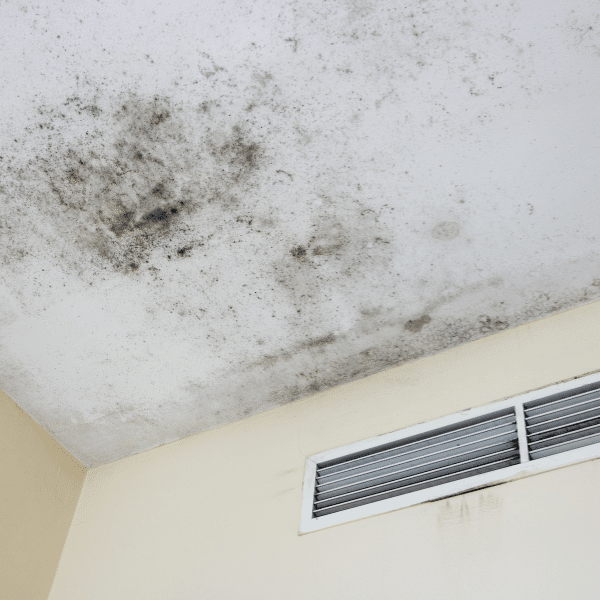
Mold often appears as:
• Dark or light patches in green, black, brown, white, or yellow
• A fuzzy or powdery texture
• Spots in clusters or lines showing moisture paths
• A strong musty odor that does not go away
If the wall feels soft, bubbled, or damp, mold is likely forming behind it. To better understand how moisture leads to growth, you can also review how water damage and mold growth are connected.
Mold Identification Guide
Below is the original approved content, preserved in full, but formatted for clarity. These descriptions remain exactly as the owner approved, with improved readability. For a focused look at common homeowner misunderstandings, you can also read about the most common myths about mold.
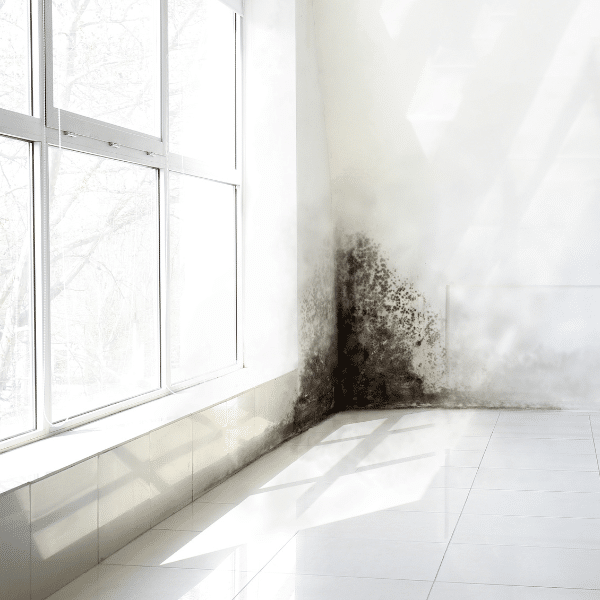
Aspergillus
A common indoor mold that comes in green, white, or gray. It forms thick layers on walls and other surfaces and often produces a musty odor. It can lead to respiratory issues and allergic reactions.
Cladosporium
A black or green mold found on painted surfaces, textiles, and wood. It grows in warm and cold conditions and emits an earthy smell. It can cause skin irritation, lung infections, and sinus problems.
Penicillium
Blue or green in color and often found on water damaged materials like wallpaper, carpet, and insulation. It produces a strong musty odor and can trigger allergies and asthma.
Stachybotrys Chartarum
Commonly known as black mold. It is toxigenic and grows on cellulose rich materials such as drywall, paper, and fiberboard. It is dark green or black and smells damp and musty.
Alternaria
Dark green or brown with a velvety texture. Found under sinks, in showers, or anywhere damp. It can lead to allergies and asthma attacks.
Chaetomium
Starts white and transitions to gray or brown. Has a cotton like texture and is common in water damaged homes. Produces a musty odor and can cause various health issues.
Fusarium
Grows at cooler temperatures and appears pink, white, or red. Found on water damaged carpet and fabrics. Can lead to skin infections or allergic reactions.
Trichoderma
White with green patches and a woolly texture. Often grows on damp furniture and carpets. Some species produce strong odors and can cause allergic reactions.
Ulocladium
Typically black and found in kitchens, bathrooms, and basements, especially after leaks or flooding. Known for causing hay fever like symptoms and skin infections.
Aureobasidium
Pink, brown, or black and commonly found behind wallpaper and on painted or wooden surfaces. Can cause skin and eye infections.
Acremonium
Starts moist then becomes powdery. Pink, grey, orange, or white in color. Often grows in condensation prone areas such as humidifiers, coils, or window seals.
Mucor
White or grayish and fluffy. Grows rapidly near HVAC and ducting. Prolonged exposure can cause serious respiratory infections.
Serpula Lacrymans
Known as dry rot fungus. Appears yellow then turns rust brown. Feeds on wood and is common in basements and crawlspaces.
Scopulariopsis
Appears in various colors on high cellulose materials. Causes nail infections and forms in damp areas.
Epicoccum
Yellow or brown and often found in house dust, textiles, painted surfaces, and plants.
Rhizopus
Black or brown woolly growth found on moist materials and in humid homes or those with past water damage.
Paecilomyces
White to yellow or green and has a velvet texture. Found in water damaged buildings and contributes to decay.
Phoma
Pink, purple, or red stains on painted surfaces or cement. Thrives in moisture.
Absidia
White and fluffy. Found on water damaged wood and drywall.
Arthrinium
Dark colored growth found on soil, plant materials, and water damaged building materials.
Mold Identification Chart
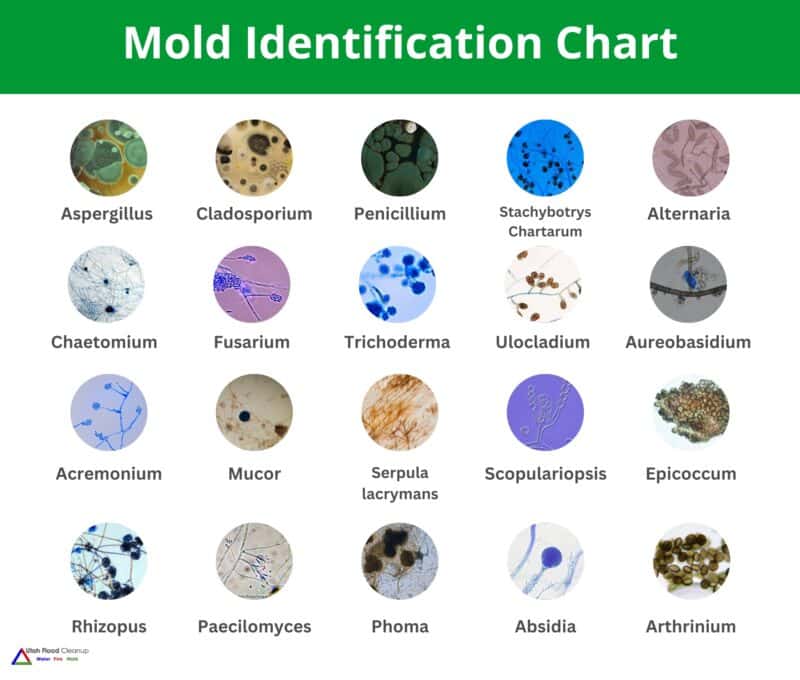
Red Flags You Should Never Ignore
Recognizing the physical signs of mold early can save your home from severe damage. For basement specific issues, it can help to compare what you see with this guide on identifying mold in your basement.
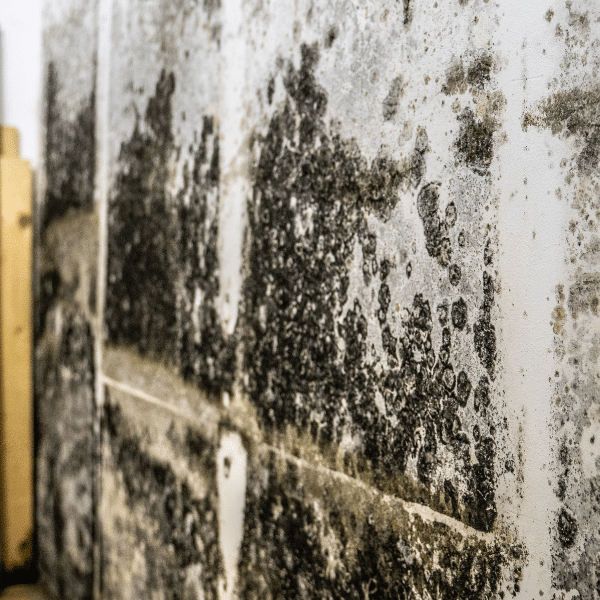
Visual Signs
Spots or patches on walls, ceilings, flooring, or baseboards in shades of black, green, yellow, or white.
Persistent Musty Odors
If the smell does not go away, the moisture and mold issue is likely inside a wall or subfloor.
Health Symptoms
Itchy eyes, coughing, persistent congestion, headaches, or rashes are common signs of mold exposure.
The Hidden Enemy: Where Mold Lurks in Your Home
Mold thrives in damp, humid areas such as bathrooms, kitchens, and basements. The danger increases when it hides behind walls, under carpets, behind wallpaper, inside crawlspaces, or in air ducts. For a broader look at the most common problem areas, you can see where mold often grows and what to do.
A professional mold identification specialist can confirm hidden mold before the damage spreads.
When Mold Becomes Dangerous
You should be concerned when:
• Mold keeps coming back
• It covers a large area
• You smell mold but cannot find it
• Walls feel soft or bulge
• There was a recent flood or leak
• Anyone in the home experiences breathing issues
Mold itself is not always the danger. The moisture behind it is what threatens your home and health. If you want a deeper breakdown, you can read more about how to determine if mold is dangerous.
When You Can Clean Mold Yourself
You can handle minor issues if the mold is small, on a non porous surface, and the source of moisture is fixed immediately. For safe do it yourself practices, review these mold removal dos and donts.
DIY steps:
• Wear protective gear
• Clean with detergent and water
• Dry the area completely
• Monitor for regrowth
If it returns, the moisture is deeper than expected.
When You Need a Professional
Professional remediation is essential when:
• Mold is growing on drywall, carpet, insulation, or framing
• You suspect black mold
• There has been long term water damage
• Mold is spreading through HVAC systems
• Mold keeps returning
Professionals use containment, moisture mapping, and HEPA filtration to prevent cross contamination and restore your home safely. To understand why professional help matters, you can also see the importance of mold remediation.
The Battle Strategy: How to Handle Mold
Here is how to prevent mold from spreading and stop it from coming back:
• Dry wet areas right away
• Improve ventilation
• Use dehumidifiers in basements
• Fix plumbing leaks quickly
• Hire professionals for large or hidden growth
Controlling moisture is especially important in Utah’s changing seasons. This guide on indoor humidity control offers additional tips to keep levels in check.
Professional Insight from Utah Flood Cleanup
At Utah Flood Cleanup, we help homeowners throughout Northern Utah identify and eliminate mold at its source. Our certified team uses advanced moisture detection tools and proven remediation methods to restore your home safely. You can learn more about our residential mold remediation services and how we protect families across the region.
We focus on stopping mold at the root, not just cleaning the surface.
Unmasking the Hidden Threat
Mold can quietly damage your home and impact your health. With the right knowledge and clear steps, you can stay ahead of it. If you suspect mold in your home, Utah Flood Cleanup can help you identify the issue, prevent it from spreading, and restore your home.
Call us at (801) 516 4076 or schedule a professional mold inspection today. You can also request a fast quote to get started.
We believe every Utah home deserves to be safe, healthy, and mold free.
- What Happens When A Pipe Bursts In Your Bathroom? - December 11, 2025
- What Type of Mold Should I Be Worried About? - December 10, 2025
- What Are Good Fire Prevention Tips for Holidays? - November 17, 2025



